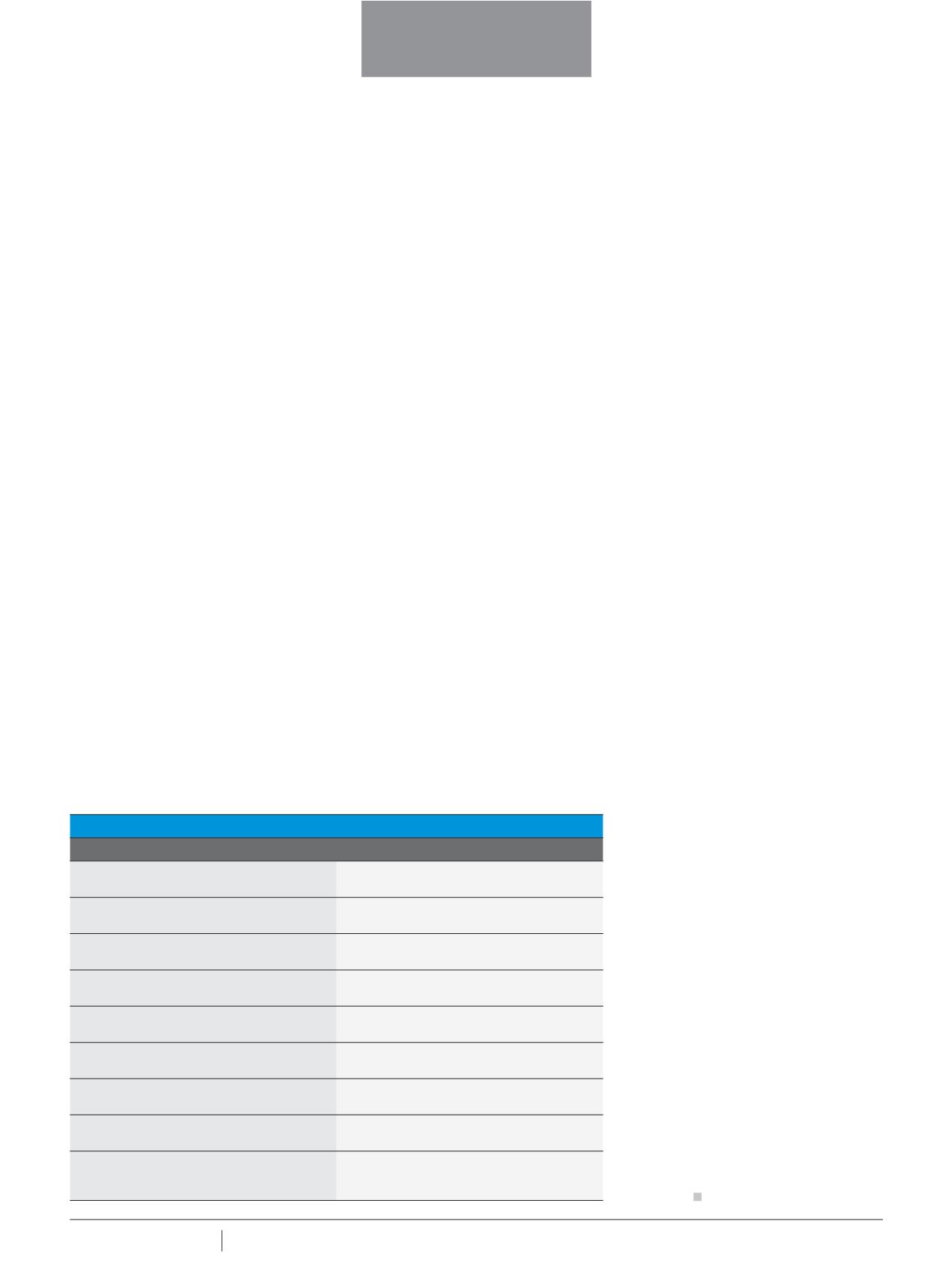

2 2
PLUMBING CONNECTION Summer 2017
Aquaknect Flexibles general manager
Tom Davies says he also has concerns
about the wire size being used on the
braiding as a weaker braid is more
likely to fail. The company, which is an
Australian manufacturer of flexible
braided connectors, uses a minimum
wire size for braiding of 0.23mm.
“This is the minimum for us but there
are some manufacturers where the
largest wire is 0.15mm, which is 33%
thinner, and you can see through the gaps
to the rubber underneath. With the tap
being turned on a few thousand times,
the hose flexes back and forth, causing a
weaker braid to fail regardless of whether
the braid has broken,” says Tom.
“Additionally, less mass means
quicker corrosion.”
There are suggestions that these low-
quality products are able to make it to
market by unscrupulous suppliers that
are defrauding the WaterMark product
certification system with what’s known
as the ‘golden sample’.
The ‘golden sample’ is when a
product supplied for third-party
testing is of a high enough quality to
pass requirements but the product
supplied when large orders are placed is
substituted with a low-cost alternative.
FUME CUPBOARDS
Common household cleaners kept
under sinks and cupboards create
a ‘fume cupboard’ environment in
areas where flexible braided hoses
are installed and is a potential second
source of corrosion causing flexible
connectors to burst.
The presence of stored household
cleaners in closed environments causes
the level of chlorine in the air to rise
to measurable levels because many
common cleaners contain chlorinated
chemical solvents, liquid chlorine or
crystallised chlorine chemicals. These
remain in the air long after the product
has finished being used.
“In most cases cleaning products are
stored in bathroom, kitchen or laundry
sink cabinets where there is high
humidity caused by condensation from
hot water being run through the taps
and bowls above the cabinet,” says Tom.
“Chlorine dissolves in humidity and
forms hydrochloric acid, which is highly
corrosive. Therefore the number of
failures in this environment caused by
corrosion is high.”
Cheryl from IAG says that the
company’s research backs up this
claim, with IAG data suggesting flexible
braided hoses eroded faster if household
cleaners are stored under the sink.
PLUMBING INDUSTRY RESPONSE
Starting a discussion about the issue
of bursting flexible braided hoses is an
important first step but action needs
to be taken to bring the problem to the
attention of regulators, government,
TAFE’s, manufacturers and consumers.
“It’s still only a small percentage of
the industry that realises this issue is
happening,” says Trevor.
At the workshop hosted by
Plumbing
Connection
, there was consensus that
the current AS/NZS3499:2006
Water
supply – Flexible hose assemblies
needs
to be updated.
“Changes to the Standard need to
reflect technology and practicality. The
current version was last reviewed in
2006, with a small amendment in 2009,
and since then there have been many
regulatory and technological changes,”
says Tom.
There are also concerns that
manufacturers are actually writing their
own interpretation of the Standard,
with one supplier on the shelves of a
prominent Australian outlet providing
a selective product warranty that
“covers domestic use only and not for
commercial applications”.
Representatives at the workshop
discussed the possibility of proposed
changes to the Standard, including
introducing a minimum wire diameter
for the stainless steel braid, future
testing for things like corrosion,
markings on the inner liner of hoses to
identify manufacturer and changes to
the classification of hoses.
Trevor agrees that there are things
within the current Standard that are
not ideal but says because many of the
issues causing burst flexible connectors
may be the result of incorrect
installation, a change to the Standard
will not have much of an impact.
“The manufacturers and suppliers
of these hoses need to implement
specific requirements about how flexible
hoses are installed and maintained. I
think that’s probably going to solve a
lot more problems compared to the
Standard.”
Regardless of how the industry
decides to take this issue forward, it’s
important that action is taken soon.
“Unless the whole industry gets
together and does something, we will
still be talking about this in a few years,”
says Shinners Plumbing owner Kevin
Shinners.
COVER STORY
FLEXIBLE BRAIDED HOSES
FLEXIBLE CONNECTORS
THE QUESTION IS
RECOMMENDATION
How do I tell good from bad, when installing
flexible connectors?
Approved product will carry WaterMark
identification and its certifier number.
What does the brand warranty tell me?
Use one that has clauses that don’t get you
into hot water.
How old is it and how long ago was it installed?
More than 10 years and any flexi should
probably be replaced.
Is it good quality – thick braiding, good
fittings?
Cheap and cheerful – if it is too good to be true,
then look for alternatives.
Is there high water pressure on site?
Consider a pressure reduction valve to limit
pressure shock through the flexi hose
Are there cleaning products in the same
cupboard?
Suggest a vent hole to allow regular airflow in
and out to reduce chloride levels.
Are there signs of water drips or rust on the
flexi hose?
Could be a ticking time bomb, replace before
failure.
Does the flexi suit the temperature and
pressure of the site?
Replace it with a more appropriate flexi hose
that’s up to the task.
Does the homeowner’s insurance policy
restrict or exclude cover for losses arising
from flexi hose failures?
Suggest a regular maintenance regime, copper
or change insurer.
















